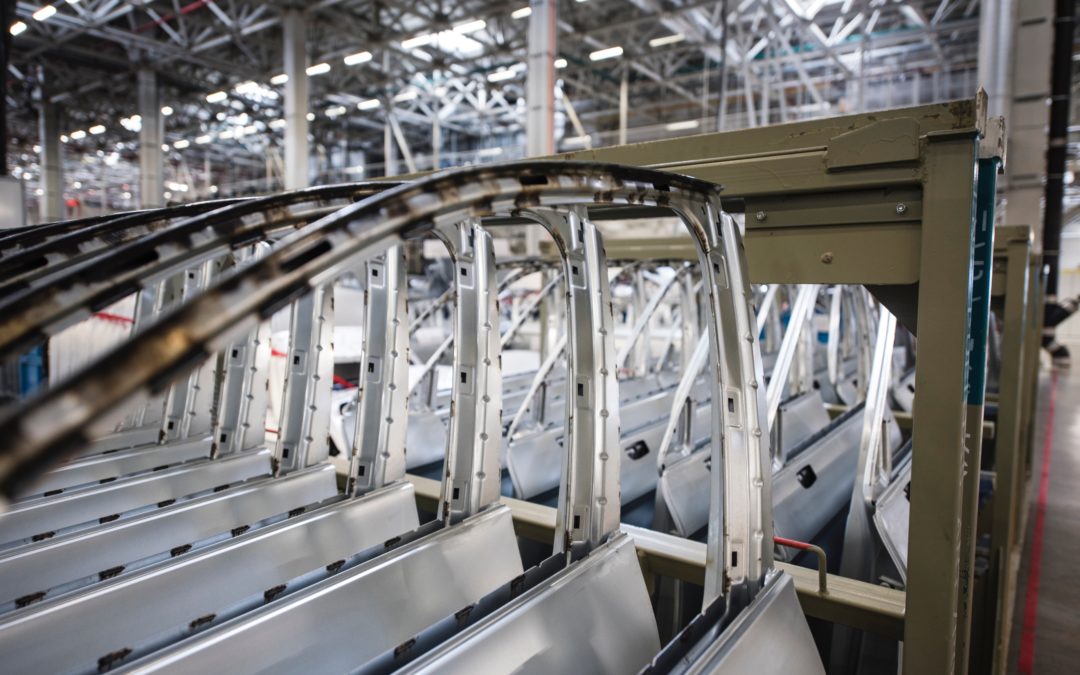Automotive cleanrooms house and facilitate important operations. Automotive parts manufacturing is responsible for developing vehicles that are more complex than ever before, infused with computerized components that allow them to achieve better things like more reliability, fuel efficiency, and advanced sensor technology. Automotive testing is responsible for preventing mass defects and saving millions of lives — as well as millions of dollars in product recalls.
These operations must be conducted and closely monitored in strictly controlled environments to ensure top quality vehicles and safety ratings for the end consumer. That’s where automotive cleanroom classifications come into play. They regulate the cleanliness of an automotive cleanroom, as well as the degree to which its systems and processes must perform in order to manage quality and consistency throughout the supply chain.
Automotive Cleanroom Classifications
The International Standards Organization developed the set of standards by which all cleanroom industries and applications must follow. The ISO document ISO 14644-1 outlines the requirements for all cleanroom environments, including automotive cleanrooms.
ISO Cleanroom Classifications
ISO 14644-1 standards are separated into Classes 1-9, where Class 9 is room air and Class 1 is the cleanest possible environment. Different automotive applications must meet different cleanroom classification standards depending on the unique threats they face to cleanliness and safety, but the majority of automotive cleanrooms fall within ISO 14644-1 Classes 5-8.
ISO 14644-1 Classes each have their own defined level of cleanliness outlined by three parameters: particle size and number, hourly air change rate (or airflow velocity), and percentage of ceiling coverage of fan filter units.
- Particle Count: the number of particles of a certain size per cubic meter. As the ISO Class decreases in number, more and smaller particles must be filtered out of the cleanroom air using powerful filters.
- Air Change Rate: how quickly air is removed, filtered, and replaced within the cleanroom. ISO Classes 5 and lower require air to be changed so regularly it is instead expressed as airflow velocity.
- Ceiling Coverage: the percentage of the cleanroom ceiling dedicated HEPA filter/fan units, or FFUs. Automotive cleanrooms with more stringent particle count requirements must dedicate a larger percentage of the ceiling space to filter coverage.
ISO requirements can change significantly as the Class number decreases. For example, ISO Class 5 automotive cleanrooms are only allowed a maximum particle count of 3,520 at 0.5 microns per cubic meter, compared to the 352,000 microns of an ISO Class 7 or the 3,520,000 of an ISO Class 8 cleanroom. Certain manufacturing processes, such as those working with electronics and microchips, will require a greater level of process control and may come with more stringent ISO standards.
Cleanroom Design for Automotive Cleanroom Classifications
Automotive cleanrooms must be properly designed to maintain a controlled space, monitor environmental factors, and limit airborne and surface contamination to an acceptable degree, in order to reach their automotive cleanroom classifications.
The cleanroom type as well as the systems and features it contains allow this level of control to exist.
Automotive Cleanroom Types
To meet the cleanroom classification requirements of automotive cleanrooms, two cleanroom types can be used. These cleanrooms can be designed to be free-standing or integrate with an existing structure, including walls, windows, HVAC and ventilation equipment.
- HardWall cleanrooms allow the highest level of control over environmental factors and can conform to even the most stringent cleanroom classifications of ISO Class 1.
- RigidWall cleanrooms are also an option for most plastics industry cleanrooms requiring a classification of ISO Class 5-8, and feature a minimalist, clear panel design.
The best fit for each application will depend on its specific classification requirements and industry standards. Both will be durable and high-quality, capable of supporting all your automotive projects, equipment, and systems.
Automotive Cleanroom Systems
Your automotive cleanroom’s air filtration system is responsible for removing particles from the air, keeping the air pure and helping your cleanroom reach stringent ISO Class standards. Also, the cleanroom HVAC is another vital system responsible for controlling environmental factors like temperature, humidity, and pressure.
Automotive cleanrooms also typically require control of static electricity. Uncontrolled static and electrostatic discharge (ESD) can cause defects in your products or even lead to injury of personnel. If required by your application, you can incorporate a static control system and anti-static and ESD-safe materials into your cleanroom design.
Automotive Cleanroom Features
Other automotive cleanroom features, such as cleanroom lighting and cleanroom furniture, allow you to run your day-to-day operations smoothly and efficiently. Lighting systems, from standard to flow through modules, work with a variety of cleanroom types and layouts, and save valuable ceiling space for filtration units.
Automotive cleanrooms are designed to include all the essential furniture, storage, workstations, and surfaces your employees need to stay comfortable and productive. The cleanroom design will also incorporate any oversized, industry-specific equipment and create paths for cranes, carts, and other transport equipment.
Automotive cleanroom classifications are necessary to regulate the manufacturing environment to ensure product consistency and consumer safety, especially in those applications where the presence of contaminants could be a risk to an employee, buyer, or other drivers. Although they require a bit of work to reach, these standards protect your facility and your personnel, and help you create the best parts and products in the automotive industry.
Interested in designing an automotive cleanroom? With Angstrom Technology, you can have a modular cleanroom designed to meet your specific cleanroom classification requirements, built with everything you need to get it running, and assembled on site by our professional installers. To learn more about our modular automotive cleanrooms, give us a call or reach out online.


